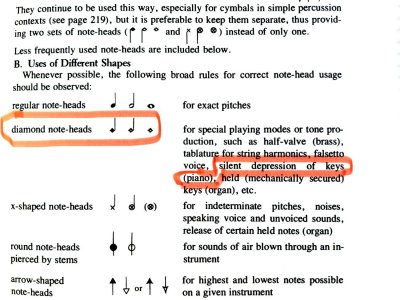Zedcars
Klaatu barada nikto
Hello,
I'm hoping someone with knowledge of extended piano techniques might be able to help me.
I'm currently studying a score which has the following piano part:

Does anybody know how one would perform this? It's 11 bars repeated from the beginning.
I have Kurt Stone's book Music Notation in the Twentieth Century which suggests the following:

How would silent depression of D work when it's supposed to be tremolo? Is it D, or is it just random notes around that area?
Many thanks,
Darren
I'm hoping someone with knowledge of extended piano techniques might be able to help me.
I'm currently studying a score which has the following piano part:

Does anybody know how one would perform this? It's 11 bars repeated from the beginning.
I have Kurt Stone's book Music Notation in the Twentieth Century which suggests the following:

How would silent depression of D work when it's supposed to be tremolo? Is it D, or is it just random notes around that area?
Many thanks,
Darren






